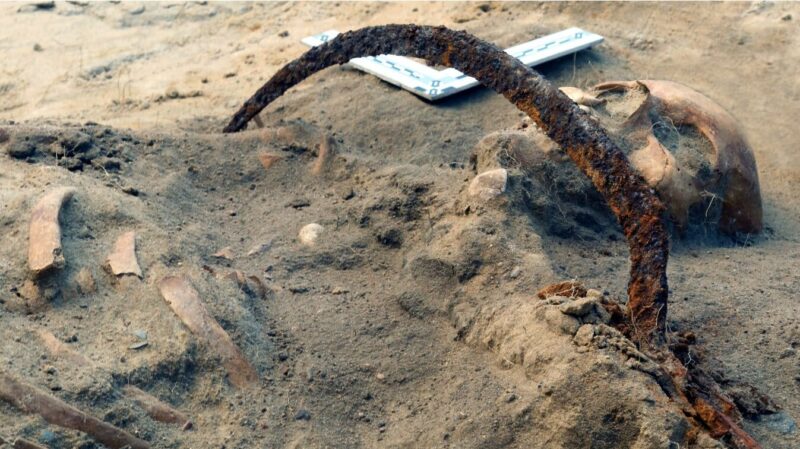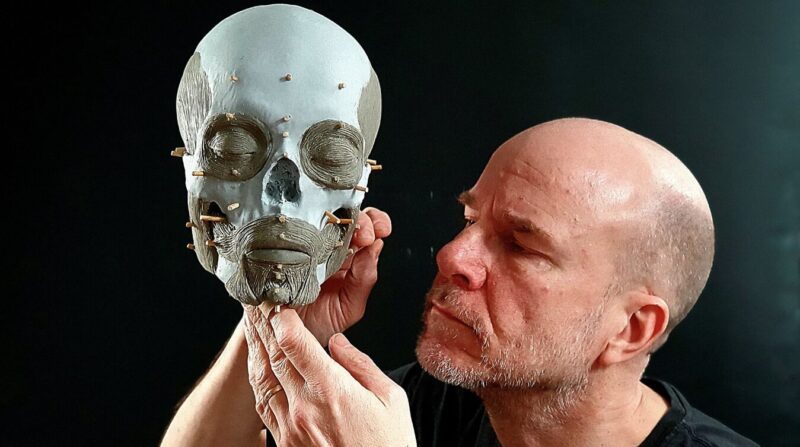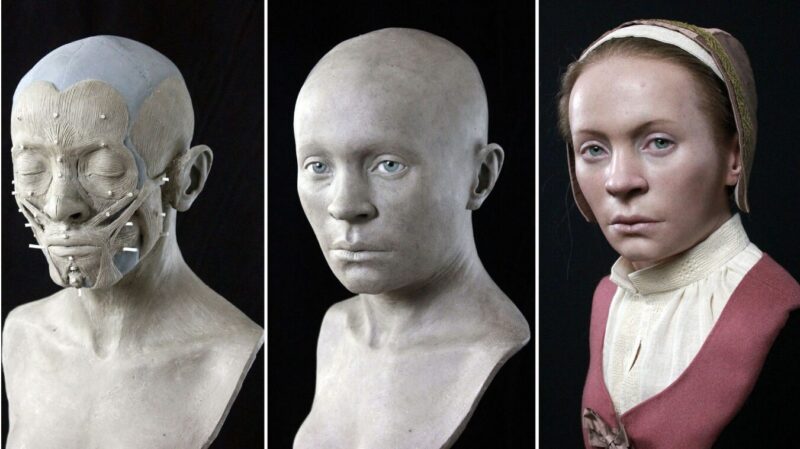Scientists have brought a vampire back from the dead with 3D printing and modeling clay. Found in an unmarked cemetery in Pien, Poland in 2022, her grave shows all the signs of a burial of someone considered a vampire.
Called Zosia by locals, the girl was buried with an iron sickle across her neck, padlocks around her feet, and a few different types of wood around her. Her remains date back 400 years.
At that time, all three items were believed to protect humans from vampires. Slavic folklore tells that sharp objects such as sickles would decapitate the dead and stop them from returning to the living world. Other such vampire burials in Poland include sickles or padlocks. This is the first time that archaeologists found both in a single grave.

Photo: Nicolaus Copernicus University/Reuters
Resurrected as a human, not a monster
To reconstruct her face, archaeologist Oscar Nilsson first 3D-printed a replica of Zosia’s skull. Then he added layers of modeling clay to build up her face bit by bit. Analysis of her bone structure, gender, age, ethnicity, and weight helped replicate her exact features.
“It’s emotional to watch a face coming back from the dead,” Nilsson told Reuters. “Especially when you know the story of this young girl.”
He said the team wanted to bring Zosia back to life “as a human, and not as this monster that she is buried as.”
During the 17th century, superstitions were rife. Anyone who behaved differently, had a disability, was born out of wedlock, or was foreign could be accused of witchcraft or supernatural connections. Unusually, Zosia’s grave shows signs of relative wealth within her community, including fragments of silk and precious metals. This intrigued the researchers even more.

Photo: Oscar Nilsson/Project Pien/Reuters
The mystery of Zosia
Dariusz Polinski, who led the excavations, told The Past, “She was neither ritually murdered nor was she one of the convicted in the witchcraft trial. Those individuals were treated in a different way, and they were usually thrown into provisional graves. It is possible that in her lifetime, the woman experienced a tragedy and was harmed. On the other hand, her appearance or behavior might have provoked contemporary residents to be afraid of her.”
Anthropologists, archaeologists, and forensic experts have been working to uncover who Zosia was and what she looked like. She died between the ages of 17 and 21, had Swedish origins, and suffered from a hemangioma on her chest. These are growths of blood vessels on the skin that may have been visible to others. They can cause dizziness, fainting, and extreme headaches. This would likely have been viewed negatively by those around her and added to the belief she was a vampire.






